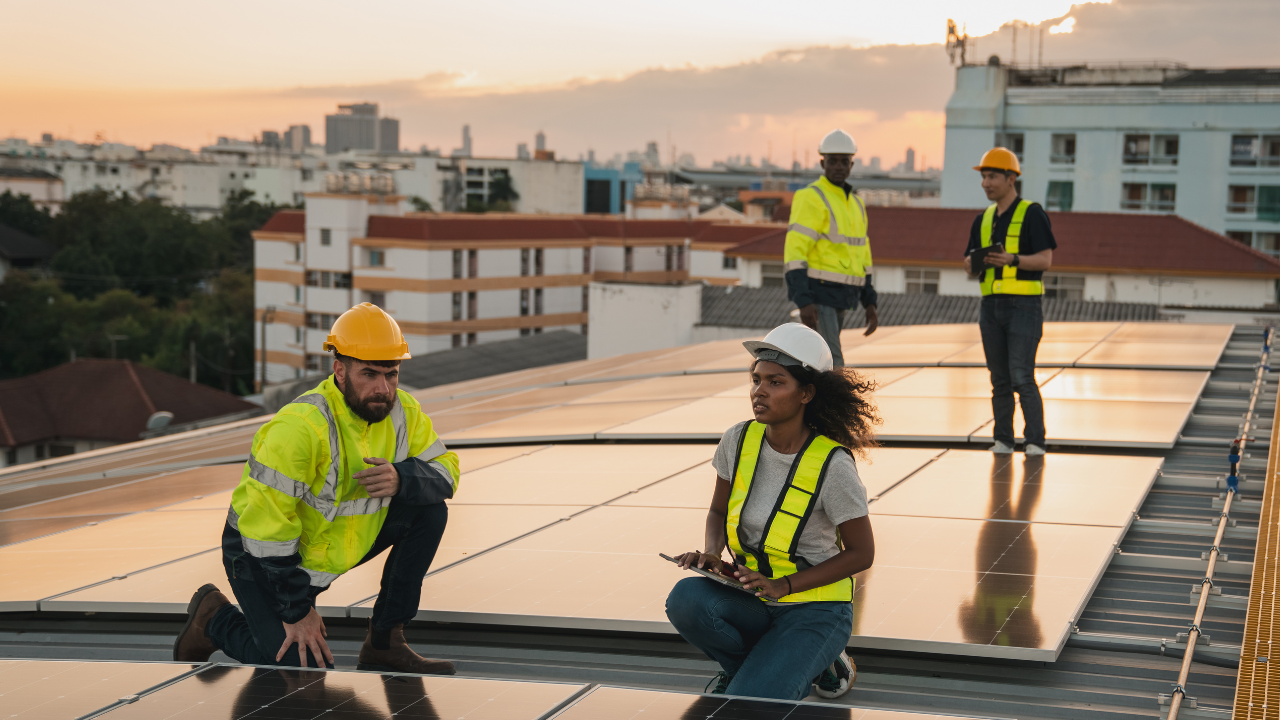How to Install Solar Panels at Home: Step-by-Step Guide

With rising energy costs and growing environmental awareness, many UK households are choosing to install solar panels and generate their own clean electricity. Even in a cloudy climate, solar power is proving to be an efficient and cost-effective solution for homes across the country.
Thanks to government schemes and technological advances, solar panels are becoming increasingly common on rooftops throughout England, Scotland, Wales, and Northern Ireland. By embracing this technology, individuals not only reduce their carbon footprint but also gain greater control over their energy use and financial future.
Is it worth it in the UK?
Yes. While the UK doesn’t enjoy Mediterranean sunshine, modern systems can generate electricity even on overcast days. Through the Smart Export Guarantee (SEG), you can earn money by exporting unused energy back to the grid.
Financial incentives, combined with long-term savings on electricity bills, make it an excellent time to install solar panels at home. Many regions across the UK offer additional local grants or subsidies, and with electricity prices on the rise, solar energy provides a shield against inflation.
Step 1: Assess your electricity usage
Check your past electricity bills to find out your typical monthly and annual consumption. This helps determine the appropriate system size and number of panels. A well-sized system ensures maximum return on investment without producing excess power that might go unused.
Also factor in future needs, such as installing an electric vehicle charger, switching from gas heating to electric, or accommodating home offices that increase daytime energy use. It’s important to plan for future lifestyle changes to avoid under-sizing your installation.
Step 2: Check your property’s suitability
Most systems are installed on pitched roofs facing south, but east or west-facing roofs can also work well. Ideally, the location should be free of shade during most of the day. A shade analysis can help identify any issues caused by chimneys, trees, or neighbouring buildings.
In some cases, ground-mounted systems may be an option for properties with adequate space. Your installer will assess the roof’s condition, angle, shading, and surface area before proceeding with installation. A structural assessment may also be necessary for older buildings.
Equipment needed to install solar panels
A standard home setup usually includes solar PV panels, an inverter to convert electricity to usable AC, mounting structures, and electrical wiring. Optional components include battery storage, charge controllers (in off-grid systems), and monitoring equipment.
Ensure your installer follows MCS (Microgeneration Certification Scheme) standards to qualify for SEG payments and warranties. Inverter efficiency, panel type, and brand warranties should be considered during system design, as these affect both performance and long-term reliability.
Step 3: Hire an MCS-certified installer
Using an accredited installer is essential for safety, compliance, and access to financial incentives. The installer will manage the system design, obtain any necessary planning permissions, and connect your system to the grid.
Installers can also help you apply for SEG registration, navigate local regulations, and ensure your system meets G98 or G99 grid connection standards, depending on system size. A reputable installer will provide a performance estimate and warranty for the equipment and workmanship.
Step 4: Connect to the grid and register for SEG
After installation, your system must be registered with your energy supplier under the Smart Export Guarantee. This allows you to receive payments for the surplus energy your system exports. Many suppliers offer competitive SEG rates, so it’s worth comparing them before signing up.
Make sure you understand how export metering works. If your energy meter doesn’t support export readings, your installer may recommend upgrading. You should also receive a DNO (Distribution Network Operator) notification once your system is connected and compliant.
Benefits of installing solar panels
By choosing to install solar panels, you can significantly reduce your electricity bills, especially if you use most of your energy during daylight hours. You also gain the opportunity to earn through SEG payments.
Additional benefits include increasing your property’s value, reducing your household’s carbon emissions, and gaining independence from energy price volatility. In remote areas or homes aiming for self-sufficiency, pairing solar with batteries can allow partial or complete off-grid living.
Are batteries necessary?
No, but they’re helpful. Battery storage allows you to use stored solar energy at night or during outages, improving self-sufficiency. With time-of-use tariffs and peak energy pricing, batteries can help reduce costs by shifting consumption to lower-rate periods.
While not required, batteries are becoming more affordable and increasingly common in UK households. The government may offer incentives for battery systems, and future energy flexibility schemes could reward homes with storage capabilities.
Frequently asked questions
How much does it cost in the UK?
Most residential systems cost between £5,000 and £8,000, depending on size and complexity.
What’s the maintenance like?
Very little is needed. A quick panel clean a few times a year and a professional check every couple of years will suffice.
Can I use solar panels with a flat roof?
Yes. Special mounting brackets can tilt the panels to the ideal angle for energy generation.
How much can I save?
You could save up to 70% on electricity bills, depending on your location, usage, and system design.
Do I need planning permission?
In most cases, solar panels are permitted developments, but restrictions may apply in conservation areas or listed buildings.